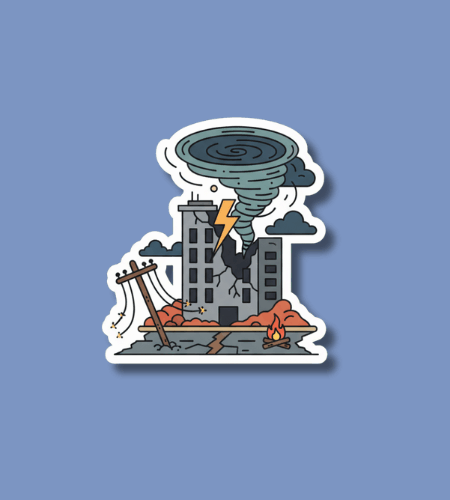Disaster Day is observed on October 13, coinciding with the International Day for Disaster Risk Reduction. It is a day dedicated to raising awareness about disasters, encouraging preparedness, and promoting efforts to reduce risk and build resilient communities.
Table of Contents
History of Disaster Day
The observance originated from the United Nations’ adoption of October 13 as the International Day for Disaster Reduction (later reframed as the International Day for Disaster Risk Reduction), with the aim of shifting focus from reacting to disasters toward preventing and mitigating them. The day has been observed since 1989, following a UN call to promote a global culture of risk awareness.
Over time, Disaster Day has come to be used in many places (via NGOs, governments, community groups, schools) as an occasion to hold drills, educational events, public outreach, and campaigns focused on building resilience, strengthening disaster response strategies, and raising public awareness of hazards.
Why is Disaster Day important?
Disasters — whether natural (storms, floods, earthquakes) or human‑made (industrial accidents, infrastructure failure) — can cause tremendous loss of life, property, and disruption. Disaster Day reminds us that such losses are not inevitable: proactive measures, planning, risk assessment, and community engagement can reduce harm. The day helps shift thinking from disaster response to disaster resilience.
Also, Disaster Day fosters collective action. It encourages governments, organizations, communities, and individuals to coordinate in assessing vulnerabilities, improving infrastructure, sharing knowledge, and investing in early warning systems or mitigation strategies. In doing so, it strengthens the social fabric—because resilience is not just about structures and technology, but about people, communication, trust, and preparedness.
Some of what Disaster Day promotes:
- Recognizing and mapping local disaster risks and vulnerabilities
- Strengthening early warning systems, response capacity, and infrastructure
- Educating citizens about what to do before, during, and after disasters
- Encouraging policies and investment in disaster risk reduction
- Fostering collaboration among governments, NGOs, scientists, and communities
How to Observe Disaster Day
You can observe Disaster Day in practical, meaningful ways. Start by assessing the hazards most relevant to your location—floods, storms, wildfires, earthquakes—and review whether your home, school, or workplace has an updated emergency plan and kit. If not, use the day to create or improve one. Share that plan with family, neighbors, or colleagues.
You might also host or join community events: workshops on preparedness, simulation drills, public talks, or school activities. Use Disaster Day to engage children in learning about safety and resilience. On social media, share tips, checklists, or stories of resilience using hashtags such as #DisasterDay or #DisasterRiskReduction. Encourage local authorities or NGOs to highlight their work or run campaigns.
Here are suggestions you could try
- Build or refresh an emergency kit (water, food, first aid, battery, communication)
- Create or review a family or workplace disaster plan
- Conduct a safety audit at home or your community (fire exits, drainage, signage)
- Hold or participate in a mock drill or preparedness workshop
- Share awareness materials or tips in your network or social media
Disaster Day Dates Table
| Year | Date | Day |
|---|---|---|
| 2025 | October 13 | Monday |
| 2026 | October 13 | Tuesday |
| 2027 | October 13 | Wednesday |
| 2028 | October 13 | Friday |
| 2029 | October 13 | Saturday |
Subscribe to our newsletter and never miss a holiday again!

